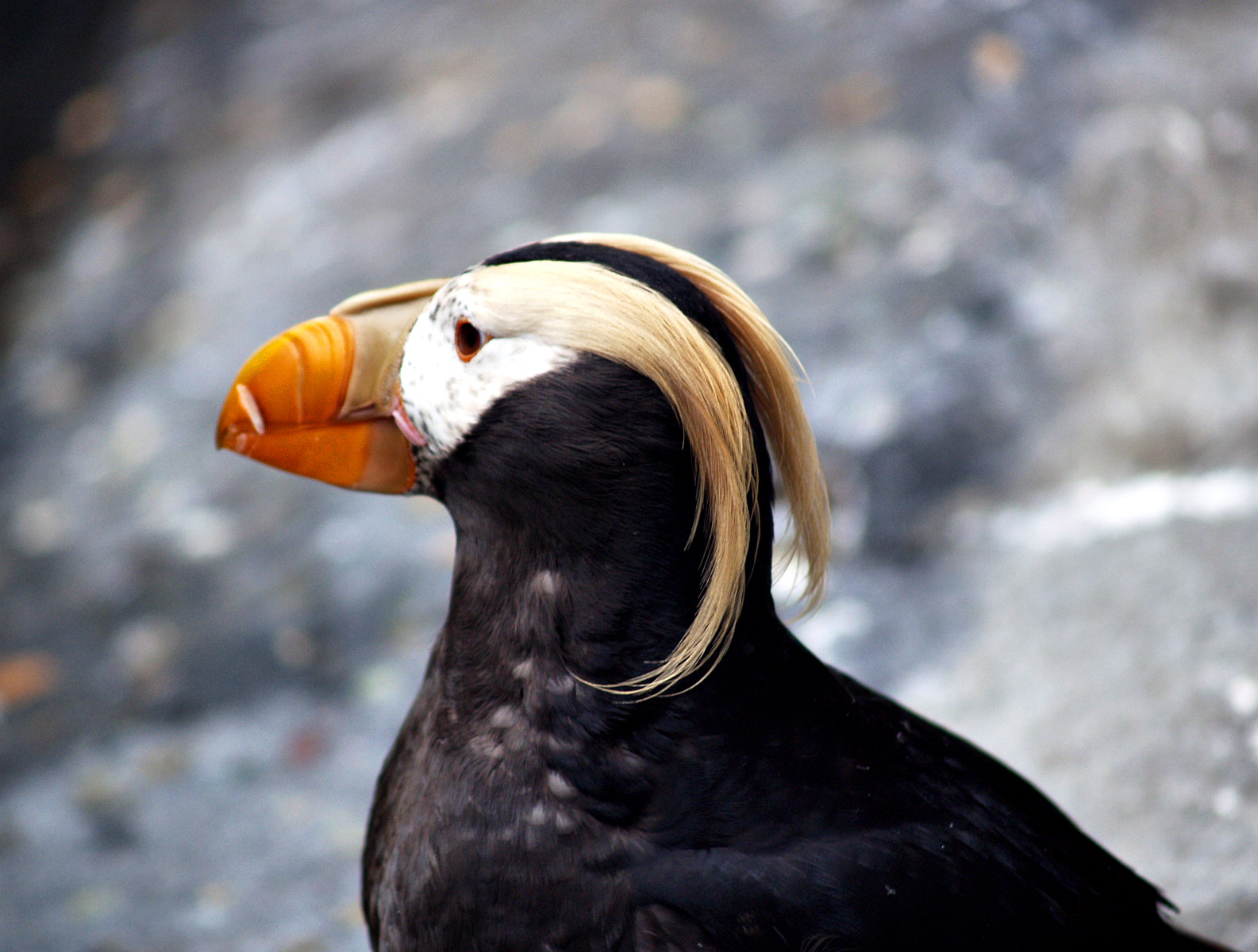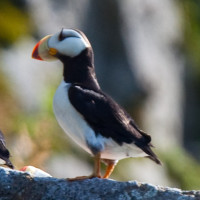Beschreibung
More than 20,000 birds often nest on the cliff faces of this craggy island in Kachemak Bay about three miles south of the Homer Spit. On a summer day, the scene can be almost overwhelming—thousands of screaming Kittiwake. Common Guillemot, Brünnich's Guillemot, Pigeon Guillemot, Marbled Murrelet, Kittlitz's Murrelet and Tufted Puffin and Horned Puffin and other seabirds diving offshore for fish. Lone Bald Eagle on the hunt for a meal. The pungent air will reek with the fishy scent of guano and ocean spray, while thousands of birds might soar over your head in a massive wave. It’s one of the easiest-to-visit rookeries in Alaska.
Details
Zugang
The island is owned by the Seldovia Native Corp. and is off-limits to landing. You’ll need to charter a boat, paddle a kayak or take a tour from the Homer Spit boat harbor. From Anchorage, take the Seward Highway south to the Kenai Peninsula, then continue south down the Sterling Highway to Homer. Stay on the highway into town, following the obvious route via Lake Street and Ocean Drive as it curves onto the spit. About 230 miles or 4.5 hours from Anchorage.
Terrain und Habitat
MeerBedingungen
Offene LandschaftRundweg
NeinIst ein Spektiv nützlich?
NeinGute Beobachtungszeit
Frühjahr , Sommer , HerbstBeste Beobachtungszeit
SommerRoute
asphaltierte StraßeSchwierigkeitsgrad der Tour
EinfachErreichbarkeit
BootBeobachtungshütten oder -türme
NeinZusätzliche Informationen
Photo Tufted Puffin by Matthew Zalewski, CC BY-SA 3.0 <https://creativecommons.org/licenses/by-sa/3.0>, via Wikimedia Commons



